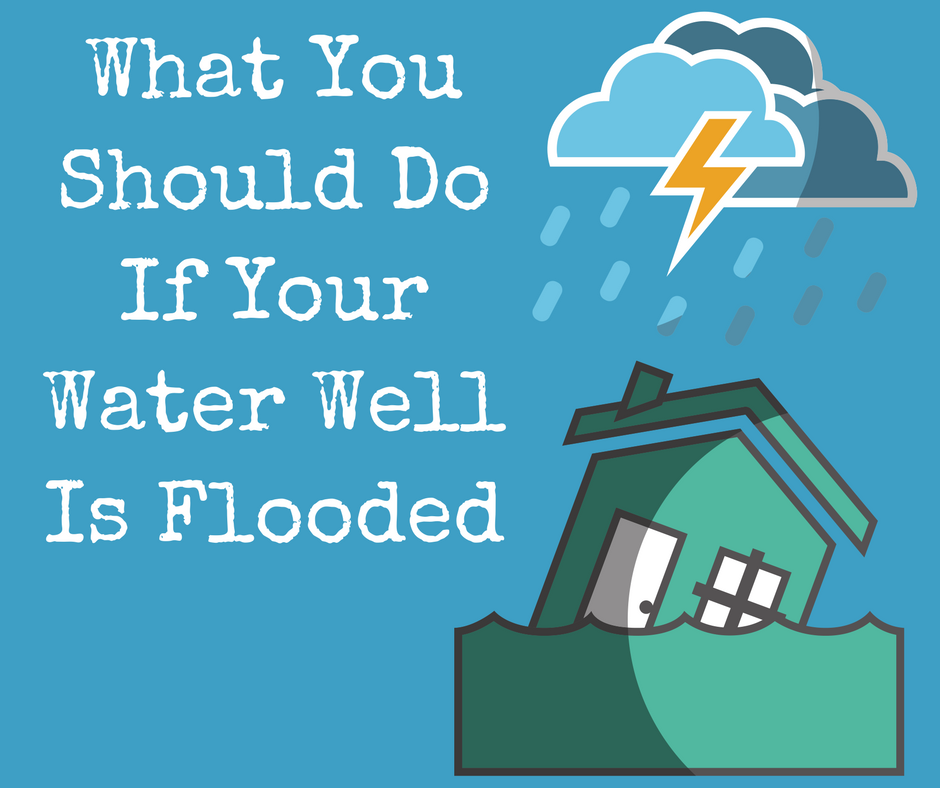Flood Water Can Contaminate Your Water Well. Here's What To Do.
With the recent hurricanes, Harvey, Irma, Jose and Maria, a lot of focus has been on the havoc that heavy rains and wind can cause for homeowners. One of the worst lingering effects of a major storm is the potential for flooding.
When heavy rains bring flooding people are often not thinking about the possible damage to their water well, but if your area was flooded during the recent string of storms, your private well might be in danger of contamination from the pollutants found in the flood waters.
How Can I know If My Well is Contaminated After A Flood?
Often during heavy flooding, state agencies will monitor the condition of local water supplies that may be susceptible to contamination. Be alert for drinking water advisories from your state's department of health. If flood water has risen above your well cap, it is most likely contaminated. Because you are responsible for the health of your private well, it is critical to have your well tested as soon as possible after the flood waters have receded.
Short-Term Solutions For Drinkable Water
If your well is contaminated, your first concern is to find an alternate source of potable water for drinking, cooking, and hygiene. Bottled water is the easier=st and safest option. Often, in severe flooding municipalities or disaster relief agencies will distribute bottled water to those affected. You can also get water from another private water source if you know it's safe, or you can decontaminate your home's well water by boiling it for five minutes and then cooking.
Getting Your Water Well Back Into Service, Safely
Once you've secured your short-term needs, it's time to take the actions required to get your water well safely back into service. There are four key steps you need to take to get your flooded water well back into service. They are:
Assessment
Repair and Flushing
Disinfection
Sampling
Assessment
The first step is to assess the damage. There are signs you can watch for that can signify your water is unsafe. Flood water can carry debris that can damage the well or crack the casing. It can also deposit mud or sediment into the well. If any of the signs are present, contact your well water professional to repair the system. When first checking the well, start by turning off the power to the well. Check to see if it was flooded, check for debris and other signs. Next check to see if the ground around the well is broken or unstable. Then inspect the electrical components and wires. Check for exposed wires and if water has infiltrated components. Check the well casing and finally the cap and seal.
Repair and Flushing
Take precautions. Never step in the water surrounding the well until the power is off to reduce risks. Clean around the well casing, cap, and other components. Remove mud and debris. If the ground around the well cap has shifted, regrade it, so that surface water once again flows away from the well. Surface water from around the wellhead and cap can carry contaminants into the well. After it's been repaired, restart the pump, If it doesn't start, contact your well water professional. If it does start, flush out the well by running water until it is clear to get rid of any floodwater in the well. Use a hose to clear the water to an area that is removed from the well. Depending on the size and depth of the well, flushing may take thirty minutes, or it could take hours or days.
Disinfection
Sanitize your well water to kill germs before using the water for any reason. Changes in the taste, appearance or odor can indicate contamination. Until you've had your well tested and the results show that it is safe, use another source of water. To disinfect your well, a concentrated bleach solution needs to be circulated through the well and your home's plumbing before you use your well. Disinfection is a complicated process, and you should hire a well water professional to undertake a proper disinfection.
Sampling – Testing your Well
Once you've completed the three steps outlined above, it's important to test your water well to confirm it is free from contamination and safe to consume. After the chlorine has been flushed from the system, test your well water to confirm that it is contaminant free. If you notice a chlorine odor, you may need to flush the well again and wait several days before testing. Until you have been given the all-clear from a qualified state-certified testing lab, continue using bottled water or another safe source of water.
A flooded well can be dangerous! If you've experienced a flooded well and need advice, contact the water well professionals at Skillings & Sons. We provide water testing, well inspections, well cleaning and repair services and can ensure that your well water is safe, clean and in perfect operating condition after a flood.


